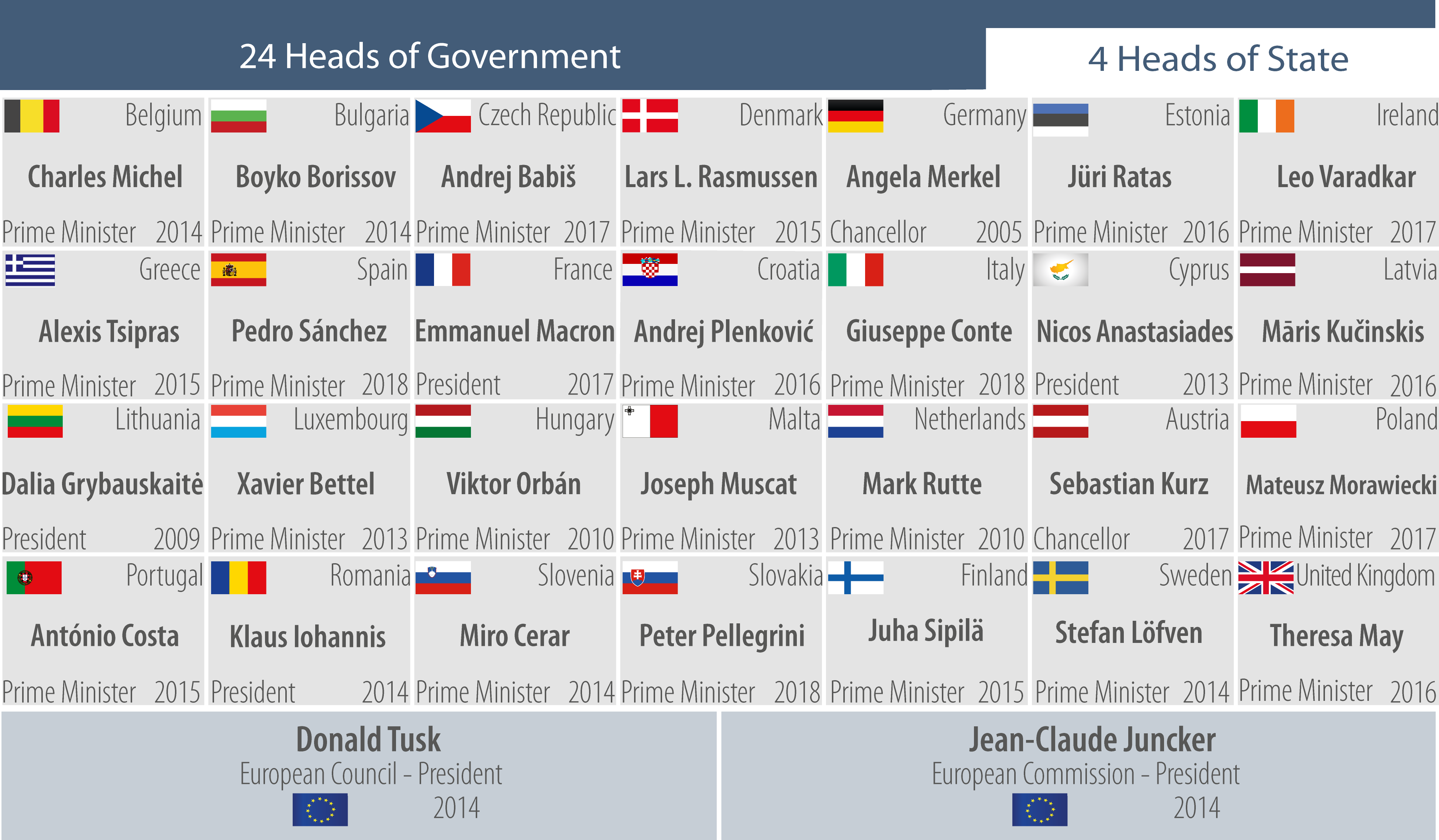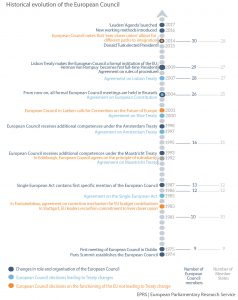Written by Ralf Drachenberg,

The European Council is one of the most important European institutions and receives a lot of media attention when it meets. However, many aspects of this institution are less well known, and citizens may ask themselves who the Members of the European Council are, how long the European Council has existed, and how its role has developed over time. Our ‘European Council: facts and figures’ briefing tries to provide information that would be useful to know the next time the EU Heads of State or Government are in town.
The role of the European Council, as defined in Article 15(1) TEU, is to ‘provide the Union with the necessary impetus for its development’ and to define its ‘general political directions and priorities’. Although EU leaders have been meeting routinely in the European Council since 1975, that title did not appear in the Treaties until 1987. At that point, the European Commission President also officially became a member of the European Council. It was only with the adoption of the 1992 Maastricht Treaty that the European Council and its role were broadly defined for the first time.
The data regarding the frequency of European Council meetings, shows that in practice, EU Heads of State or Government meet a lot more often than the four annual meetings stipulated in the Lisbon Treaty. The types of meetings has also increased to include formal and informal meetings, as well as the recent EU27 format. The European Council deals with many topics, but not all with the same intensity. The main topics discussed by the European Council in their conclusions have often been macro-economics, business and finance, the single market, and foreign policy issues. More recently, attention has turned to migration, which has become the most prominent topic due to the unprecedented flows into the EU.
Historically, the European Council leaders only decided to meet regularly as the ‘European Council’ at the Paris Summit of December 1974. The European Council became an official EU institution only when established in the Lisbon Treaty in 2009, at the same time that the office of a full-time President was established. The role of the President of the European Council and his reporting responsibilities to the European Parliament has also evolved. While in the early years of the full-time President, a report was made to the Parliament after each formal and informal meeting, this has not always been the case since 2014. The Lisbon Treaty also ended the routine attendance of foreign affairs ministers, who up until then had been present to assist their Head of State or Government.
Today, the European Council membership is made up of the Heads of State or Government of the 28 EU Member States, as well as the Presidents of the European Council and of the European Commission. Although not a member of the European Council, the High Representative of the Union for Foreign Affairs and Security Policy/Vice-President of the European Commission also takes part in its meetings. The President of the European Parliament is ‘invited to be heard’ at European Council meetings. This has not always been the case, as the type of participants and organisation of the European Council have developed through successive Treaty changes, as well as expanding its role and areas of responsibility. The average length of European Council membership varies significantly between Member States. When considering the political composition of the European Council over time, it is clear that almost all Heads of State or Government belonged to the same three political groups until the early 2000s, whereas the diversity of political affiliation has broadened in recent years. Although female membership has increased in recent years, improving the gender balance, since its creation the European Council has remained a largely male-dominated forum. The average age of its members, being highest in 1992 at 59 years old, recently stabilised in the low 50s.
Read this briefing on ‘European Council: Facts and Figures‘ on the Think Tank pages of the European Parliament.













Be the first to write a comment.